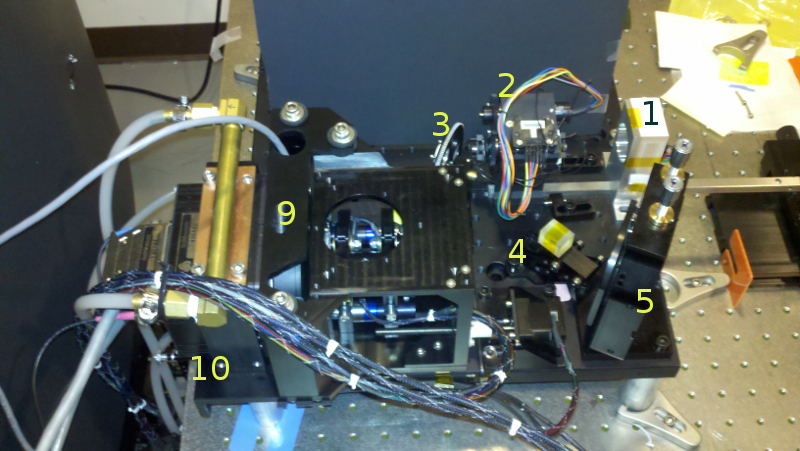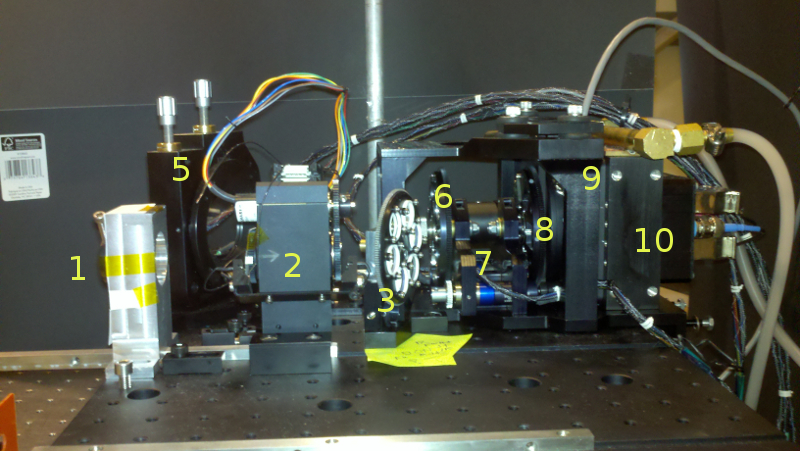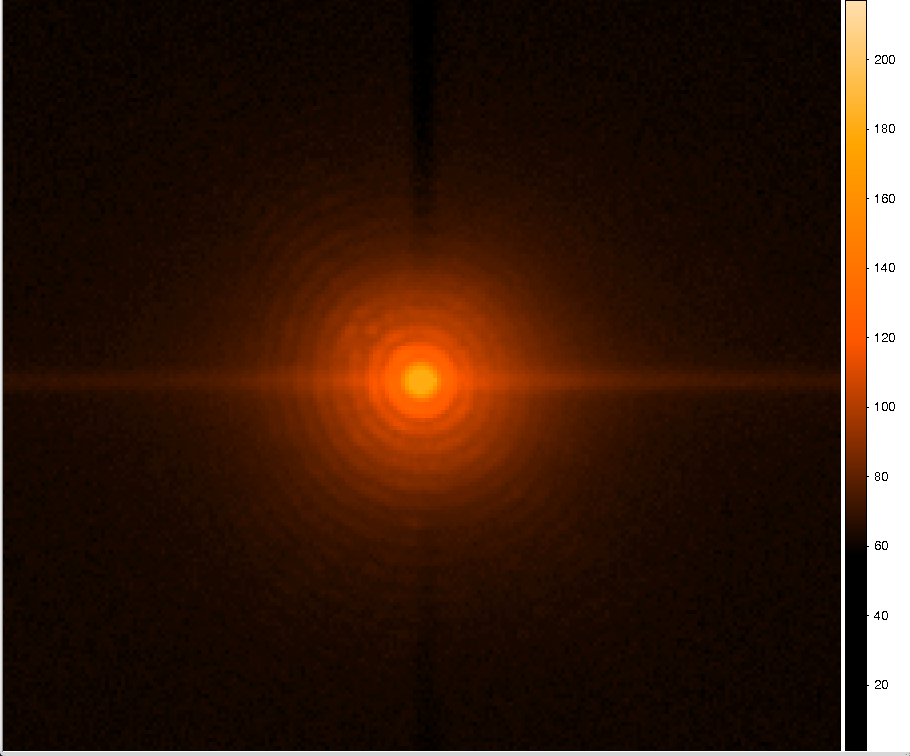After a very intense couple of weeks, we have built up the nearly complete VisAO camera in the Magellan AO Lab at Steward Observatory. The images below show the hardware mounted on the board. Missing is the wavefront sensor (WFS) hardware, which is waiting for us in Florence, Italy.


The numbers label specific components:
1: The input lens, in a temporary holder (the permanent one is awaiting us in Italy too).
2: The ADC mount, containing an early prototype of the custom 2-triplet ADC designed by Derek Kopon.
3: The beamsplitter wheel, a.k.a. filter wheel 1. This allows us to select how much and what wavelength of light is sent to the WFS and to our science camera.
4: The Wollaston prism on its lift. This splits the beam in 2 to enable our simultaneous differential imaging (SDI) mode.
5: Our tip-tilt gimbal mirror. This is a temporary solution, which we hope to replace with a high speed tip-tilt mirror.
6: Filter wheel 2. This wheel contains our main photometric filters, currently: SDSS r’, i’, z’, and a filter which passes wavelengths longer than 950nm.
7: Baffle tube. We plan to add a pickoff occulting spot here, to feed a tip-tilt and Strehl sensing camera which will mount on the platform over the tube. These are planned future improvements.
8: Filter wheel 3: This wheel will contain our SDI filters (2 filters in one cell) and in the future our occulting spots (to block the bright central star light).
9: The shutter. You can see our vibration isolation system (the rubber grommets). These are the only place that the shutter mount contacts the rest of the camera.
10: The CCD47. The liquid cooling attachment, another temporary device, keeps our dark current low.
Everything is now under software control in our lab, and it has even started to feel more like a telescope control room when we are taking data. The image below was taken last week.

We took this image at 1064 nm (the main IR line of a double YAG laser) through the input lens, the ADC, using the 50/50 beam splitter, and the SDSS z’ filter. The Wollaston was down, and we first focused the system using our motorized focus stage. This is a log stretch, in which I count 15 Airy rings. The cross (one bright line and one dark line) are very small detector artifacts that are only visible due to the log scale.